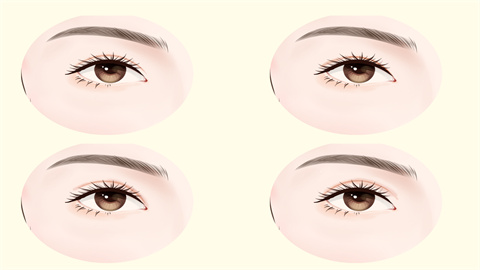What causes the outer ring of the eyeball to turn gray?
The graying of the outer edge of the eyeball may be caused by genetic factors, aging, iron deficiency anemia, chronic conjunctivitis, or Wilson's disease. Appropriate management can be selected based on specific circumstances. If physical discomfort occurs, it is recommended to visit a hospital promptly and follow medical advice for treatment.

1. Genetic factors: Genetic factors may cause the outer edge of the eyeball to appear gray from birth, often in a ring shape. This is a normal physiological condition, usually causing no discomfort symptoms and requiring no special treatment. This is a normal physiological phenomenon, and eye whitening products containing ingredients such as niacinamide and arbutin can be used to help fade pigmentation.
2. Aging: With increasing age, the scleral tissue around the eye gradually ages, and substances such as calcium begin to deposit, causing the outer edge of the eyeball to gray. This is a natural physiological process, which generally does not affect vision. In daily life, attention should be paid to eye care, eating more foods rich in vitamins A, C, and E, such as carrots, oranges, and nuts, appropriately supplementing lutein, and undergoing regular eye examinations to monitor eye health.
3. Iron deficiency anemia: Lack of iron in the body affects hemoglobin synthesis, causing anemia. Ocular blood circulation and nutrient supply are affected, and the outer edge of the eyeball may appear gray. Patients may also experience symptoms such as pale complexion, dizziness, fatigue, and palpitations. Patients can take medications such as ferrous sulfate tablets, ferrous succinate tablets, and vitamin C tablets under medical guidance to alleviate symptoms.
4. Chronic conjunctivitis: Long-term inflammation of the conjunctiva due to bacterial or viral infections or allergies affects the surrounding scleral tissue, leading to color changes in the outer edge of the eyeball. Common symptoms include redness, dryness, foreign body sensation, and increased secretions. It is recommended to use medications such as levofloxacin eye drops, acyclovir eye drops, and sodium cromoglycate eye drops under medical guidance for treatment.
5. Wilson's disease: This is an autosomal recessive copper metabolism disorder characterized by copper accumulation in the body, which deposits at the edge of the cornea, forming a characteristic ring and causing the outer edge of the eyeball to gray. Patients may also experience symptoms such as tremors, muscle dystonia, and abnormal liver function. Patients can take medications such as penicillamine tablets, trientine hydrochloride capsules, and zinc gluconate tablets under medical guidance to alleviate symptoms.
In daily life, it is recommended to maintain a balanced diet structure and diversify food intake to help maintain health.
References:
[1] Yang Leiqi. Syndrome differentiation and treatment combined with local eye medication for chronic conjunctivitis and prognosis analysis [J]. Chinese Journal of Metallurgical Industry Medicine, 2023, 40(02): 199-200.
[2] Shi Xuemei, Shi Limei. Diagnostic value of red blood cell distribution width combined with ferritin in iron deficiency anemia [J]. Chinese Journal of Urban and Rural Enterprise Health, 2025, 40(01): 13-16.




